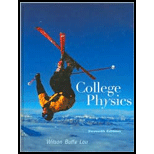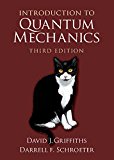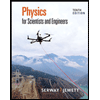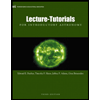
College Physics
7th Edition
ISBN: 9780321601834
Author: Jerry D. Wilson, Anthony J. Buffa, Bo Lou
Publisher: Addison-Wesley
expand_more
expand_more
format_list_bulleted
Concept explainers
Question
Chapter 2, Problem 30E
To determine
The initial velocity and the acceleration of the plane.
Expert Solution & Answer
Want to see the full answer?
Check out a sample textbook solution
Chapter 2 Solutions
College Physics
Ch. 2 - Prob. 1MCQCh. 2 - Prob. 2MCQCh. 2 - Prob. 3MCQCh. 2 - Prob. 4MCQCh. 2 - Distance is to displacement as (a) centimeters is...Ch. 2 - Prob. 6MCQCh. 2 - Prob. 7MCQCh. 2 - A negative acceleration can cause (a) an increase...Ch. 2 - Prob. 9MCQCh. 2 - Prob. 10MCQ
Ch. 2 - Prob. 11MCQCh. 2 - A car accelerates from 80 km/h to 90 km/h, while a...Ch. 2 - Prob. 13MCQCh. 2 - For a constant linear acceleration, the...Ch. 2 - Prob. 15MCQCh. 2 - An object is thrown vertically upward. Which of...Ch. 2 - Prob. 17MCQCh. 2 - Prob. 18MCQCh. 2 - Prob. 19MCQCh. 2 - Prob. 20MCQCh. 2 - Prob. 1CQCh. 2 - Prob. 2CQCh. 2 - Prob. 3CQCh. 2 - Prob. 4CQCh. 2 - Prob. 5CQCh. 2 - Prob. 6CQCh. 2 - Prob. 7CQCh. 2 - Prob. 8CQCh. 2 - Prob. 9CQCh. 2 - Prob. 10CQCh. 2 - Car A is in a straight-line distance d from a...Ch. 2 - Prob. 12CQCh. 2 - Prob. 13CQCh. 2 - How many variables must be known to solve a...Ch. 2 - Prob. 15CQCh. 2 - Prob. 16CQCh. 2 - Prob. 17CQCh. 2 - Prob. 18CQCh. 2 - Prob. 19CQCh. 2 - Prob. 20CQCh. 2 - What is the magnitude of the displacement of a car...Ch. 2 - Prob. 2ECh. 2 - Prob. 3ECh. 2 - Prob. 4ECh. 2 - Prob. 5ECh. 2 - Prob. 6ECh. 2 - Prob. 7ECh. 2 - Prob. 8ECh. 2 - The interstate distance between two cities is 150...Ch. 2 - A race car travels a complete lap on a circular...Ch. 2 -
A student runs 30 m east, 40 m north, and 50 m...Ch. 2 - A student throws a ball vertically upward such...Ch. 2 - An insect crawls along the edge of a rectangular...Ch. 2 - A plot of position versus time is shown in Fig....Ch. 2 - A high school kicker makes a 30.0-yd field goal...Ch. 2 - Prob. 17ECh. 2 - Prob. 18ECh. 2 - Short hair grows at a rate of about 2.0 cm/month....Ch. 2 - A student driving home for the holidays starts at...Ch. 2 - Prob. 21ECh. 2 - Prob. 22ECh. 2 - An automobile traveling at 15.0 km/h along a...Ch. 2 - Prob. 24ECh. 2 - Prob. 25ECh. 2 - Prob. 26ECh. 2 - Prob. 27ECh. 2 - During liftoff, a hot-air balloon accelerates...Ch. 2 - A new-car owner wants to show a friend how fast...Ch. 2 - After landing, a jetliner on a straight runway...Ch. 2 - A train on a straight, level track has an initial...Ch. 2 - A hockey puck sliding along the ice to the left...Ch. 2 - What is the acceleration for each graph segment in...Ch. 2 - Figure 2.24 shows a plot of velocity versus time...Ch. 2 - Prob. 35ECh. 2 - A train normally travels at a uniform speed of 72...Ch. 2 - Prob. 37ECh. 2 - A car accelerates from rest at a constant rate of...Ch. 2 - A car traveling at 25 mi/h is to stop on a...Ch. 2 - A motorboat traveling on a straight course slows...Ch. 2 -
The driver of a pickup truck going 100 km/h...Ch. 2 - A roller coaster car traveling at a constant speed...Ch. 2 - A rocket car is traveling at a constant speed of...Ch. 2 - Two identical cars capable of accelerating at 3.00...Ch. 2 - According to Newton’s laws of motion (which will...Ch. 2 - An object moves in the +x-direction at a speed of...Ch. 2 - A rifle bullet with a muzzle speed of 330 m/s is...Ch. 2 - The speed limit in a school zone is 40 km/h (about...Ch. 2 - Assuming a reaction time of 0.50 s for the driver...Ch. 2 - Prob. 50ECh. 2 - Prob. 51ECh. 2 - An object initially at rest experiences an...Ch. 2 - Prob. 53ECh. 2 - An object initially at rest experiences an...Ch. 2 - Prob. 55ECh. 2 - Prob. 56ECh. 2 - A car accelerates horizontally from rest on a...Ch. 2 - An automobile is traveling on a long, straight...Ch. 2 - A student drops a ball from the top of a tall...Ch. 2 - Prob. 60ECh. 2 - Prob. 61ECh. 2 - You can perform a popular trick by dropping a...Ch. 2 - Prob. 63ECh. 2 - A boy throws a stone straight upward with an...Ch. 2 - In Exercise 64, what would be the maximum height...Ch. 2 -
The Petronas Twin Towers in Malaysia and the...Ch. 2 - In an air bag test, a car traveling at 100 km/h is...Ch. 2 -
You throw a stone vertically upward with an...Ch. 2 - A Super Ball is dropped from a height of 4.00 m....Ch. 2 - In Fig. 2.25, a student at a window on the second...Ch. 2 -
A photographer in a helicopter ascending...Ch. 2 - The acceleration due to gravity on the Moon is...Ch. 2 - It takes 0.210 s for a dropped object to pass a...Ch. 2 - Prob. 74ECh. 2 - Prob. 75ECh. 2 - Prob. 76ECh. 2 - A car and a motorcycle start from rest at the same...Ch. 2 - Prob. 78ECh. 2 - Prob. 79ECh. 2 - Prob. 80ECh. 2 - Prob. 81ECh. 2 - Prob. 82ECh. 2 - Prob. 83ECh. 2 - Prob. 84ECh. 2 - Prob. 85ECh. 2 - Prob. 86ECh. 2 - Prob. 87ECh. 2 - A Superball is dropped from a height of 2.5 m and...
Knowledge Booster
Learn more about
Need a deep-dive on the concept behind this application? Look no further. Learn more about this topic, physics and related others by exploring similar questions and additional content below.Recommended textbooks for you
 College PhysicsPhysicsISBN:9781305952300Author:Raymond A. Serway, Chris VuillePublisher:Cengage Learning
College PhysicsPhysicsISBN:9781305952300Author:Raymond A. Serway, Chris VuillePublisher:Cengage Learning University Physics (14th Edition)PhysicsISBN:9780133969290Author:Hugh D. Young, Roger A. FreedmanPublisher:PEARSON
University Physics (14th Edition)PhysicsISBN:9780133969290Author:Hugh D. Young, Roger A. FreedmanPublisher:PEARSON Introduction To Quantum MechanicsPhysicsISBN:9781107189638Author:Griffiths, David J., Schroeter, Darrell F.Publisher:Cambridge University Press
Introduction To Quantum MechanicsPhysicsISBN:9781107189638Author:Griffiths, David J., Schroeter, Darrell F.Publisher:Cambridge University Press Physics for Scientists and EngineersPhysicsISBN:9781337553278Author:Raymond A. Serway, John W. JewettPublisher:Cengage Learning
Physics for Scientists and EngineersPhysicsISBN:9781337553278Author:Raymond A. Serway, John W. JewettPublisher:Cengage Learning Lecture- Tutorials for Introductory AstronomyPhysicsISBN:9780321820464Author:Edward E. Prather, Tim P. Slater, Jeff P. Adams, Gina BrissendenPublisher:Addison-Wesley
Lecture- Tutorials for Introductory AstronomyPhysicsISBN:9780321820464Author:Edward E. Prather, Tim P. Slater, Jeff P. Adams, Gina BrissendenPublisher:Addison-Wesley College Physics: A Strategic Approach (4th Editio...PhysicsISBN:9780134609034Author:Randall D. Knight (Professor Emeritus), Brian Jones, Stuart FieldPublisher:PEARSON
College Physics: A Strategic Approach (4th Editio...PhysicsISBN:9780134609034Author:Randall D. Knight (Professor Emeritus), Brian Jones, Stuart FieldPublisher:PEARSON

College Physics
Physics
ISBN:9781305952300
Author:Raymond A. Serway, Chris Vuille
Publisher:Cengage Learning

University Physics (14th Edition)
Physics
ISBN:9780133969290
Author:Hugh D. Young, Roger A. Freedman
Publisher:PEARSON

Introduction To Quantum Mechanics
Physics
ISBN:9781107189638
Author:Griffiths, David J., Schroeter, Darrell F.
Publisher:Cambridge University Press

Physics for Scientists and Engineers
Physics
ISBN:9781337553278
Author:Raymond A. Serway, John W. Jewett
Publisher:Cengage Learning

Lecture- Tutorials for Introductory Astronomy
Physics
ISBN:9780321820464
Author:Edward E. Prather, Tim P. Slater, Jeff P. Adams, Gina Brissenden
Publisher:Addison-Wesley

College Physics: A Strategic Approach (4th Editio...
Physics
ISBN:9780134609034
Author:Randall D. Knight (Professor Emeritus), Brian Jones, Stuart Field
Publisher:PEARSON
Speed Distance Time | Forces & Motion | Physics | FuseSchool; Author: FuseSchool - Global Education;https://www.youtube.com/watch?v=EGqpLug-sDk;License: Standard YouTube License, CC-BY